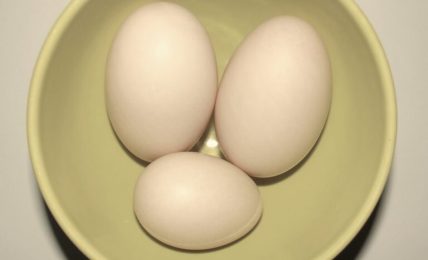First off, there are two types of hypertension (high blood
pressure)—primary or essential hypertension and secondary hypertension.
Primary hypertension occurs in the absence of another
disease—it just happens. It may be due
to genetics or lifestyle, or a combination of the two. Most cases of high blood pressure are this
type. Secondary hypertension occurs as a
result of another disease, such as adrenal gland tumors or hyperthyroidism.[1] When life gets challenging, diagnosing these
diseases will be difficult at best.
However, it doesn’t matter, because in an austere environment, all
hypertension is treated as primary hypertension.[2]
Hypertension usually causes no symptoms,
especially during the early onset. No
pain, no fatigue. There are a few who
experience headaches with increasing pressure, but for the most part, people
only know they have high blood pressure if they actually monitor their blood
pressure. Extremely elevated levels may
result in organ damage, but for most people, addressing hypertension is treating
a risk factor rather than a disease. That’s
during normal times.
When our society collapses, life will not be normal. People who had previously maintained good
control of their blood pressure may face new challenges in the new normal. Stress elevates blood pressure in just about
everybody, but it will exert a greater effect in those already suffering from hypertension. The results may be worsened when the medicine
supply is exhausted.
While hypertension is often referred to as the “silent
killer” because often there are no early symptoms, chronic, persistent
hypertension may cause symptoms in some individuals:
- Blurred vision
- Frequent headaches
- Nausea and vomiting
- Occasional pain in the left shoulder and chest
- Pounding of the heart and shortness of breath
with mild exercise - Weakness and dizziness[3]
Untreated severe hypertension may eventually result in
stroke, heart attack, kidney failure, and/or heart failure.[4] Fortunately, however, most patients are only
mildly hypertensive. And, fortunately,
TEOTWAWKI will provide the severe hypertension patients the opportunity to
cease the many lifestyle behaviors often contributing to hypertension.
Insurance companies employ statisticians to help them make
decisions about patient care and medications.
And the statistics show that 141 mildly hypertensive patients (diastolic
pressure is between 90 and 109 mm Hg) must be treated for 5 years to prevent 1
bad outcome.[5] In other words, most mildly hypertensive
patients are going to be just fine without medication. On the other hand, the statistics show that
for severe hypertension patients (diastolic pressure ranges between 115 and
129), one out of every three patients will be saved with medication.
The standard, very inexpensive medications for treating
hypertension can be easily acquired, if your physician is willing. If your doctor is not so cooperative, these
are all available through All Day Chemist, as well as other overseas
pharmacies.
- Diuretics like hydrochlorothiazide
- Beta blockers
- ACE inhibitors like Lisinopril
- Alpha blockers like doxazosin
- Calcium channel blockers like verapamil and
diltiazem - Amlodipine
If your supply becomes an issue, Dr. Koelker suggests that
it may be better to have sufficient supplies for lowering the blood pressure to
near normal levels for 10 years, rather than to normal levels for 5 years.[6]
Without drugs, these are the changes to make, and actually,
for best results, these changes should be made even if you do have medications:
- Lose weight
- Exercise
- Reduce dietary salt intake
- Quit smoking
- Avoid alcohol
- Cabbage also works in some people.[7]
Opinions are mixed on the use of caffeine.
Herbal options and home remedies for managing hypertension include:
- Agastache[8]
- Bugleweed[9]
- Buttermilk
- Cayenne pepper[10]
- Corn silk
- Dandelion root[11]
- European mistletoe[12]
- Foxglove[13] (However, because the therapeutic dose is
dangerously close to the lethal dose, it should only be used by physicians.) - Garlic[14]
- Ginger
- Hawthorn[15] [16]
- Lemon balm[17]
- Lesser periwinkle (Vinca minor)[18]
- Nasturtium
- Nettle[19]
- Onion
- Passion flower[20]
- Plantain
- Pumpkin
- Russian thistle (tumbleweed)[21]
- Snapdragon
- Thyme
- Valerian[22]
Links to related posts:
[1]
Survival and Austere Medicine, 3rd
Edition, 2017, 135.
[2]
Survival and Austere Medicine, 3rd
Edition, 2017, 135.
[3]
David Werner, Where There Is No Doctor, 1992, 125.
[4]
Joseph Alton, The Survival Medicine
Handbook, 2013, 375.
[5]
“Treating Newly Diagnosed Asymptomatic Hypertension,” American Family Physician, 15 October 2002, Vol 66 No 8, https://www.aafp.org/afp/2002/1015/p1547.html
(accessed 10 March 2021).
[6]
Cynthia Koelker, Armageddon Medicine,
2012, 372.
[7]
Survival and Austere Medicine, 3rd
Edition, 2017, 135.
[8]
Charles W. Kane, Medicinal Plants of the
Western Mountain States, 2017, 45.
[9]
Charles W. Kane, Medicinal Plants of the
Western Mountain States, 2017, 99.
[10]
Joseph Alton, The Survival Medicine
Handbook, 2013, 375.
[11]
Cynthia Koelker, Armageddon Medicine,
2012, 373.
[12]
Steven Foster, et al., Western Medicinal
Plants and Herbs, 2002, 253.
[13]
Steven Foster, et al., Western Medicinal
Plants and Herbs, 2002, 215.
[14]
Steven Foster, et al., Western Medicinal
Plants and Herbs, 2002, 29.
[15]
Steven Foster, et al., Western Medicinal
Plants and Herbs, 2002, 296.
[16]
Charles W. Kane, Medicinal Plants of the
Western Mountain States, 2017, 163.
[17]
Joseph Alton, The Survival Medicine
Handbook, 2013, 378.
[18]
Steven Foster, et al., Western Medicinal
Plants and Herbs, 2002, 195.
[19]
Charles W. Kane, Medicinal Plants of the
Western Mountain States, 2017, 213.
[20]
Joseph Alton, The Survival Medicine
Handbook, 2013, 378.
[21]
Steven Foster, et al., Western Medicinal
Plants and Herbs, 2002, 241.
[22]
Joseph Alton, The Survival Medicine
Handbook, 2013, 378.


